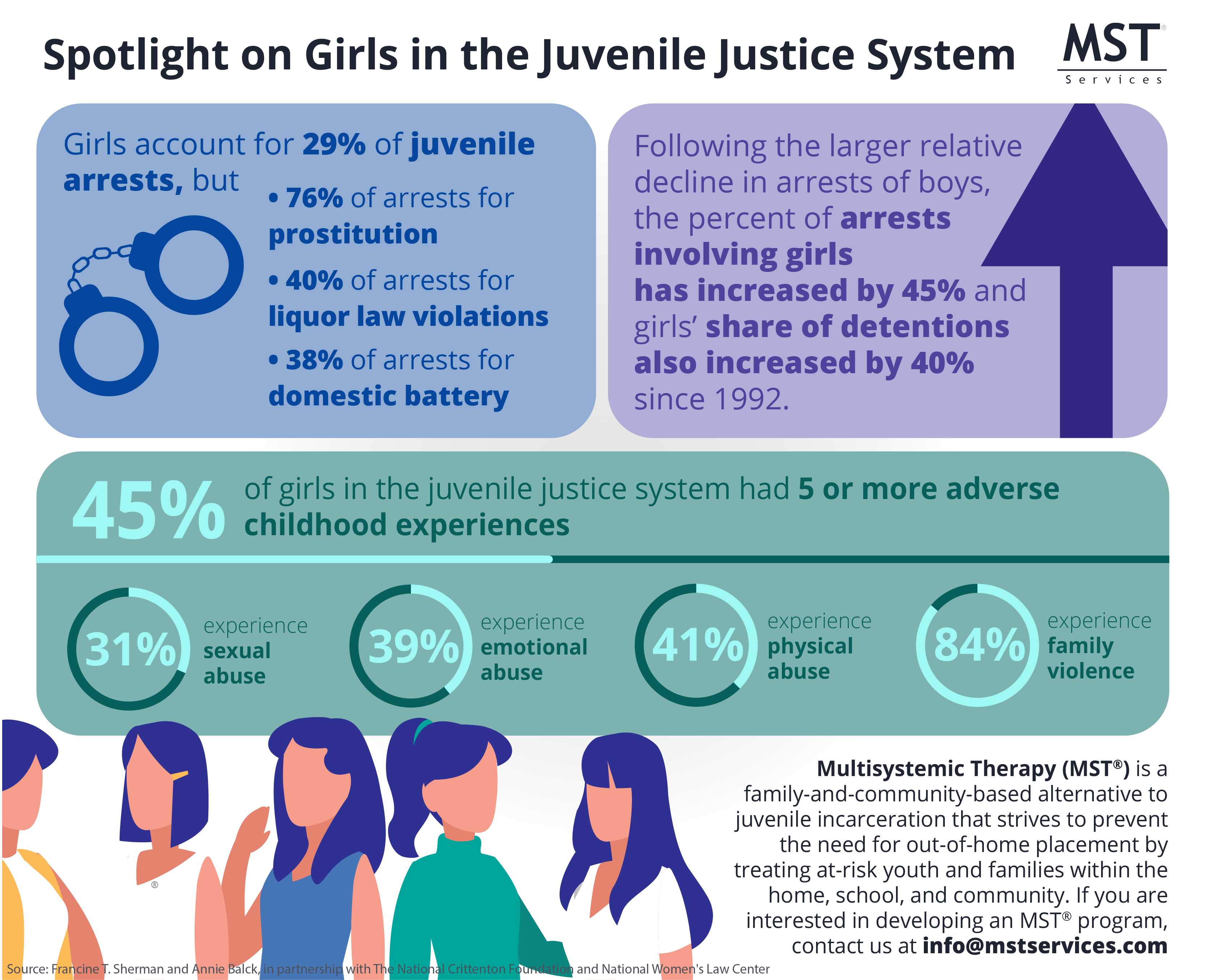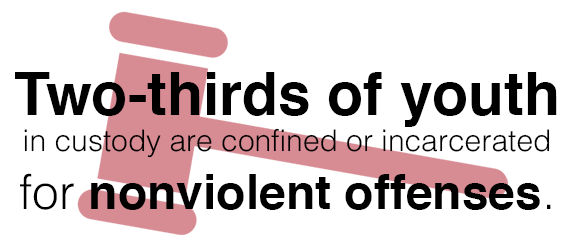In my last Civic Post, I discussed ways in which we could improve the juvenile system. This week I will be discussing the various causes and disparities within the US’s Juvenile System. In my research something that stood out to me was even though the overall juvenile placements fell 54% between 2001 and 201, there is still a significant existing racial disparity in juvenile placements that widened even further. The existence of racial and ethnic disparities is a disturbing feature of the juvenile justice system. Over the 10 years in this report, disparities for African American youth and American Indian youth have grown even as overall indicators, such as total arrests and the total numbers of youth in placement, have fallen. According to a study done by the science project, Black youth were more than five times as likely to be detained or committed than were white youth in 2015. Here are a few more statistics that I found to be interesting:
- Black girls are 2.7 times more likely than white girls to be referred to juvenile justice
- Black girls comprise 35% of the population of girls who are locked up, Latina girls account for 19%
- Black and Hispanic youth were significantly more likely than their white counterparts to be sentenced to serve time in an adult jail when transferred to adult court.

Now to fully understand this data its important to get to the root of what causes these disparities. In fact, in our Last class Professor O’Hara talked about the importance of identifying the cause of an issue before creating a solution. Various studies have shown that factors such as environmental, psychological, and social aspects are all possible contributing parts of the problem. One of the more prevalent reasons are socially related factors. These include family relationships, peer pressure, and gangs. Oftentimes, the combination of hormonal changes and bad family life is a good mix for trouble in a juvenile. If a child grows up in a home with poor parental management, poor supervision, and inconsistent discipline, they are at a greater chance of being involved in illegal activities. This is why early intervention is very necessary to create alternative responses to youth behavior which, when implemented well, can keep youth from having contact with the juvenile justice system, such as an arrest.


Solutions:
Many studies have shown that incarcerating juveniles does nothing for them in the long run. On average the government spends about 21 billion dollars on the incarceration of juveniles. However, if the government was to invest that 21 billion in the future of incarcerated juveniles, and pour an increased amount of money into preventative programs it will cut down the number of incarcerated juveniles in the future. This, in turn, reduces both the number of prisoners and the cost of caring for/housing them Also since poverty is such a prevalent factor that causes many African American youths and Hispanic to commit crimes. There needs to be a greater government invention in these communities. Whether it be to fund a better school, hire better teachers, or even implement after-school programs. All of these are solutions will be very beneficial to kids in the long run.
To help reduce disparities at the arrest stage, as well as to reduce the number of overall arrests, many communities should begin conducting training programs for law enforcement that help police to develop skills that enable more positive interactions with youth, particularly youth of color.
This is really sad to see these statistics. It’s awful that minorities are still being treated differently. It just goes to show that we as a country have a long way to go towards total equality. I really hope it gets better soon. I really liked that you chose this topic for your blog this week. I thought it was ver compelling and well-written.
I completely agree with needing to reform the prison system, especially for juveniles. The focus on rehabilitation and prevention is a lot more proactive than the reactive and unfitting incarceration of kids. This issue truly shows how deep social problems run and the importance of economics, education, and parenting. This is a multi-layered problem, and I hope we can end the unnecessary suffering.
I like the solution to the problem that you pose, although I think we could flesh it out a bit more. For example, I think that, for youth at least, prison should look more like Norwegian prisons, which are meant to penalize the convict for a little while, before rehabilitating them through teaching new skills that can help them contribute better to society and reintegrate once they get out. Whereas in the U.S., we treat our prisoners incredibly poorly, and don’t even make the attempt to rehabilitate them, both in juvenile detention and in normal prison. It’s no wonder that recidivism rates are so much lower in Norway. On top of that, better education and psychological support programs in public schools could help prevent youth from landing there in the first place.
I really like the layout of this post. Establishing cause in the beginning is very important, and ending with solutions is impactful. In your Issue Brief, you could even explain what type of cause these issues have (inadvertent, accidental, etc.) I think using the structure of this blog and the detail in your previous ones will help you craft a great Issue Brief.
I enjoy that your blogs clearly all went together. You discussed child incarceration through all, but brought up different aspects. It was really nice and cohesive. The graphic was a really nice addition, and the statistics were super appreciated even if the numbers are extremely heartbreaking. I feel like the general population can sometimes forget how far away we as a society are from complete equality, and this blog perfectly highlights that point- especially the fact that I did not understand how much of an issue this was before reading.
These statistics are horrific. My. blog is about foster care and kids who come out of foster care have a very high chance of being arrested due to bad paths they are led down. I like your ideas for solutions and I think they could make a very positive impact.
informasi beasiswa untuk mahasiswa dan pelajar